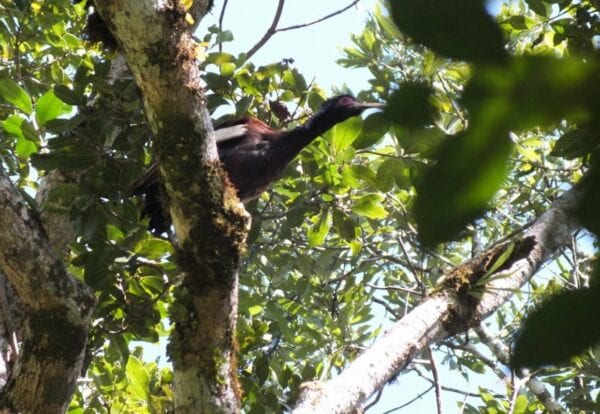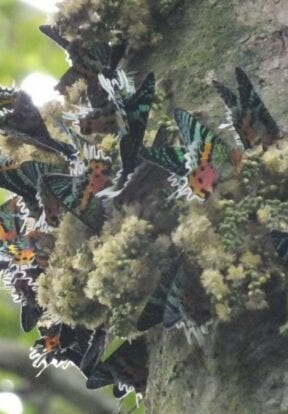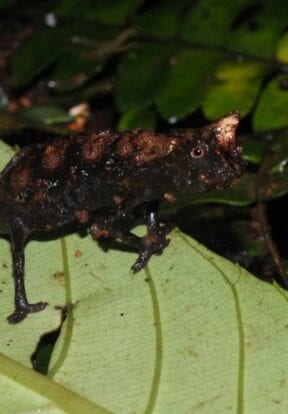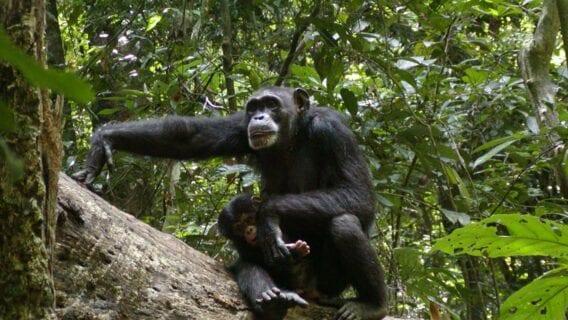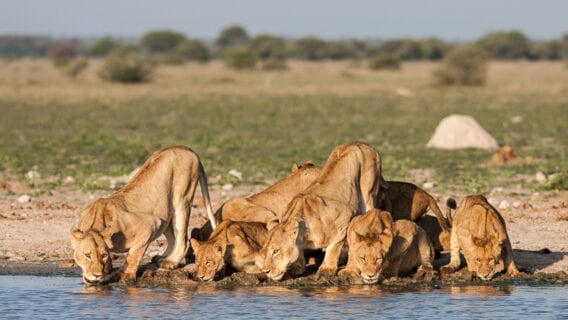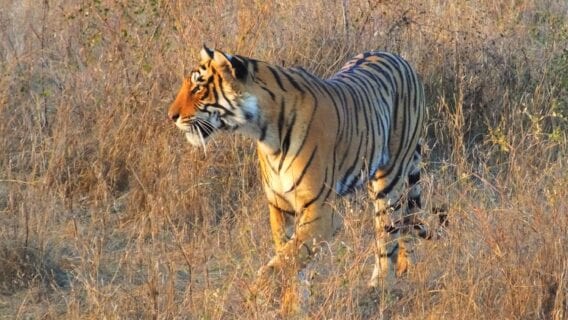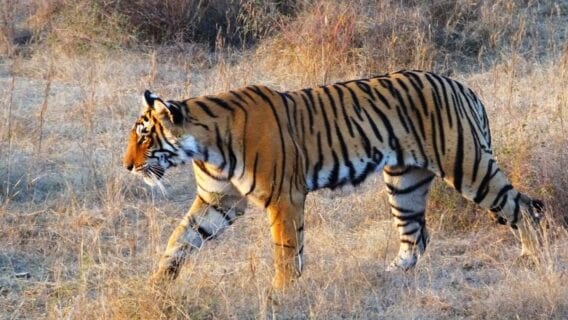A Surprising Diversity of Forest Fauna Benefit from Varecia variegata Conservation Action Work
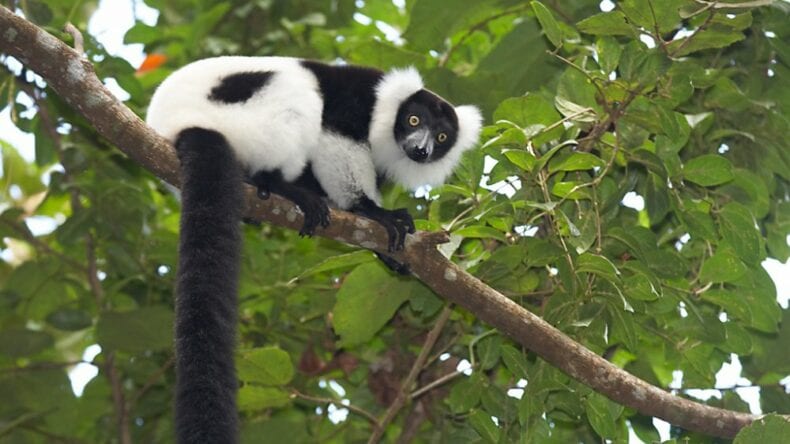
Experience on the ground suggests that targeting certain umbrella species can bring benefits to other lemurs occupying ecological niches in the same forest habitat. Indeed, according to Maholy Ravaloharimanitra, National Representative, the Aspinall Foundation Madagascar, several lemur species benefit from targeted conservation of the Critically Endangered Black-and-White Ruffed Lemur (Varecia variegata) as one such umbrella species.
The Aspinall Foundation started work protecting lemurs in Madagascar in 2009. At that time, the team was focusing on the Greater Bamboo Lemur (Prolemur simus), its distribution, abundance and conservation issues within the eastern part of Madagascar including Didy, Fierenana, Morarano gare, Lohariandava, Fetraomby, Fanasana and Anivorano Est.
“Our area of interest has evolved ever since”, says Maholy. “Currently we also work with four Critically Endangered lemur species including Varecia variegata, Indri (Indri indri), and the Diademed Sifaka (Propithecus diadema), which all inhabit the same area. We also target the Mongoose Lemur (Eulemur mongoz) and the Endangered Crowned Sifaka (Propithecus coronatus) in the western part of our project area, which includes Maevatanana and Ambato Boeny”.
Fieldwork around project sites as well as consultation with local communities helped Maholy’s team to understand how lemur conservation work could provide an umbrella of protection for other species. Data collected from the field in eastern Madagascar indicated the Greater Bamboo Lemur, Indri and the Diademed Sifaka could occupy one area alone, without any other co-occurring lemur species, so an umbrella approach could be more efficient in terms of return on effort. There was also a social argument for considering an umbrella approach. Maholy recalls community members asking her once if they could hunt the other lemur species and other wild animals and collect forest products since they were not target species.
What made Varecia variegata an ideal umbrella species candidate was its required habitat: mainly tall or large tree species, which only exist where the forest is still in good condition. Research indicated that where Black-and-White Ruffed Lemur occur, so too do Indri and Diademed Sifaka. Additionally the team’s field workers have recorded the presence of other diurnal and nocturnal species like the Lesser Bamboo Lemur (Hapalemur griseus), the Weasel Sportive Lemur (Lepilemur mustelinus), Geoffroy’s Dwarf Lemur (Cheirogaleus major), and several other species too.
The benefits are also stretching beyond lemurs to birds, reptiles, amphibians, fish and even insects. For example, Black-and-White Ruffed Lemurs share habitat with Blue Coua (Coua caerulea) – an endemic bird of Madagascar in the cuckoo family, which uses the forest as a nesting site and for hunting. Field teams have also recorded the rarely seen forest dwelling Henst’s goshawk (Accipiter henstii), also endemic to Madagascar, which prefers rainforest habitat and hunts from a hidden perch within the canopy. A last example of bird species sharing a habitat with Varecia variegata is the Madagascar Crested Ibis or Crested Wood Ibis (Lophotibis cristata), also known to use forest habitats.
Apart from birds, some species of reptiles also benefit, such as the Parson’s chameleon (Calumma parsonii), Leaf-tailed Gecko (Uroplatus sikorae), Brown Leaf Chameleon (Brookesia supercilliaris) and the Madagascan Sunset Moth (Chrysiridia rhipheus). This insect is a famous, impressive and attractive-looking lepidoptera of Madagascar. It is known to use the Omphalea oppositfilia plant (from the family Euphorbiaceae) as a main source of food – a plant that is dispersed by lemurs in many cases. There are also some species of Mantella frog, which are forest dependent species.
In the past ten years, lemur conservation has benefited from a significant increase in donor interest thanks also to awareness raising efforts about their collective plight and their central role in Madagascar’s unique ecology. Much of the discussion, however, has been about focal species, flagship species, keystone species, and biodiversity hotspots. Maholy hopes that sharing these experiences and species records will shed some light on the potential of Varecia variegata, among others, acting as umbrella species in different geographies across Madagascar.

